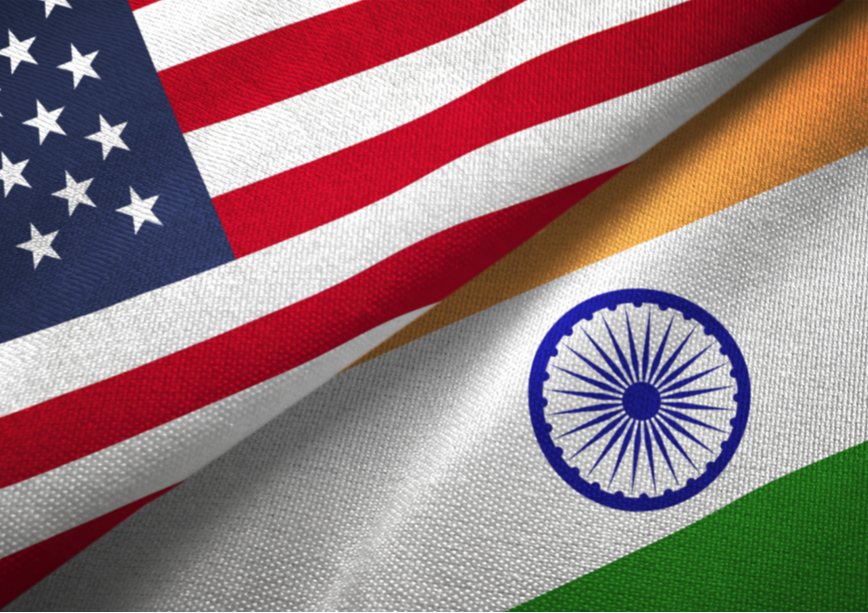
Towards the end of February this year, officials from India and the US met to co-chair the US-India Homeland Security Dialogue. In principle, the Homeland Security Dialogue bolsters strategic partnership between the US and India across various domains, including enhancing cooperation on countering narcotics, collaborating between customs authorities, combating terrorism and cybercrime, and dealing with irregular migration. Underlying all these is the trust factor in bilateral relationship, which in turn is critical to augmenting intelligence cooperation. The two countries seem to be moving in the direction of expanding cooperation in the intelligence sector with smoother channels of sensitive information sharing across the continental, maritime, and space expanse in the Indo-Pacific. The potential for India-US cooperation in the area of intelligence is immense, but much less realised. The Indo-Pacific region has opened up possibilities for intelligence cooperation in ways that were unimaginable two decades back.
The potential for India-US cooperation in the area of intelligence is immense, but much less realised. The Indo-Pacific region has opened up possibilities for intelligence cooperation in ways that were unimaginable two decades back.
The evolving dynamics of regional and global security have necessitated deeper collaboration between the intelligence agencies of the US and India. This is backed by a recognition that intelligence cooperation could propel both nations ahead of the curve in security in the Indo-Pacific. As such, both sides have sought to enhance cooperation at various levels in secure information sharing, particularly focusing on inter-agency coordination and bilateral/multilateral engagements. Given the enhanced intricacies of security and increasing domain-dependencies, intelligence cooperation stands merged with a wide range of issues, including counterterrorism, cybersecurity, trans-border illegal immigration, aviation security, maritime security and perhaps above all, threats to sovereignty.
Trust is Indispensable
At the international level, India and the US have forged strong bonds of cooperation in intelligence sharing. The recent incident involving a Khalistani leader Gurpatwant Singh Pannun catapulted the trust issue between the two countries to the helm. Some of the problems which arose between India and the US in the area of intelligence, particularly with the Pannun incident, underscore the need for a freer exchange of information at the level of intelligence agencies between the two countries. The issue per se was not so much about trust as about structural differences in how intelligence agencies assess threats and process that information in the two countries. Yet, trust remains pivotal in intelligence cooperation. Traditionally, trust has been an indispensable part of intelligence cooperation between any two countries bilaterally or within multilateral forums. The abhorrent terrorist attack in Moscow on 22 March by ISIS-K is as strong a testament to the hankering need for a more robust intelligence-sharing mechanism globally. However, trust alone cannot advance cooperation in this domain, much less overcome bereaucratic impediments and institutional bottlenecks. For that, countries need institutions with mirrored structural functioning to impart a sense of interoperability from the moment information is shared until a common goal is achieved from that information.
However, trust alone cannot advance cooperation in this domain, much less overcome bureaucratic impediments and institutional bottlenecks. For that, countries need institutions with mirrored structural functioning to impart a sense of interoperability from the moment information is shared until a common goal is achieved from that information.
Institutional Parity
Intelligence cooperation between India and the US is integral to any joint counterterrorism strategy, especially aimed at preventing catastrophic events like the 9/11 attacks or the Mumbai terror attacks of 26/11. US strategic withdrawal from Afghanistan has given rise to its own set of counter-terrorism challenges that could impact the region and beyond. As such, early apprehension remains critical. The seamless integration of domestic police with the global network through the INTERPOL’s National Central Bureau of each member nation is a key step to apprehending transnational crimes and terrorism. As members of the agency, India and the US could extend collaboration by working closely in combating the common threats emerging from both transnational crime and terrorism. A lingering issue in the India-US bilateral partnership is the former’s push for the extradition of Tahawwur Hussain Rana, an accused in the 26/11 Mumbai terror attacks. Much work remains to be done towards streamlining the extradition process, which will facilitate the swift transfer of criminals and terrorists between their sovereign jurisdictions.
One of the focal points of intelligence cooperation is the prevention of cyber fraud and cyber-attacks. Through information sharing, verification and joint initiatives, India and the US could aim to bolster cybersecurity defences and thwart potential threats before they materialise. This proactive approach is essential to safeguarding the combined digital infrastructure and maintaining the integrity of supply chain networks. The Biden administration’s Cyber Security Strategy provides scope for expanding cooperation to tackle common challenges in this field.
Two specific areas which could reshape the course of intelligence cooperation between India and the US are the maritime domain of the Indo-Pacific and the border security of India. The Indo-Pacific underscored by its flash points is one incident away from destabilisation. Its vast expanse necessitates that major players in the region combine capacities to keep the region free from threats of terrorism, transnational crimes, trafficking, piracy and illegal trade. In the area of improving border security, the right information and credible intelligence could turn the table on the enemy in no time. Circumstances post-Galwan clash between India and China have created ample space for India and the US to collaborate in intelligence sharing regarding India’s border security along the Line of Actual Control (LAC). The common purpose of defending sovereignty through information sharing could usher in a new era of border defence in the region which is aligned with the basic principles of the regional strategy—Free and Open Indo-Pacific (FOIP). The role of technology and its integration with security has increasingly blurred the line between intelligence and information. In the future, the integration of advanced GEOINT systems will enable the collection, analysis, and dissemination of geospatial data pertaining to border activities in real time. This includes satellite imagery, unmanned aerial vehicles (UAVs), and ground-based sensors to monitor and track movements along the LAC.
Information in the maritime domain has become central to regional security and stability, making intelligence sharing important. Collaborative efforts to safeguard maritime routes, combat piracy, and respond to natural disasters which have formed the backbone of a common strategy in the Indo-Pacific, all rely on timely and accurate information sharing. Real-time information shared by India from its IFC-AOR is now critical to keeping the western, southern, and eastern Indian Ocean free and open. The bilateral intelligence cooperation is feeding these domains like never before, even as domain awareness has narrowed the gap between intelligence, surveillance and reconnaissance. Most recently, India’s decision to open an operational base at Minicoy could form a strategic core in the Indian Ocean along with Diego Garcia and Djibouti which have US bases. The four foundational agreements between India and the US now facilitate an information-sharing structure unseen in the past given its involvement in geospatial intelligence and information. In the Indo-Pacific, the advantages of a joint counter-intelligence strategy between India and the US could range from controlling piracy in the western Indian Ocean to creating an information quadrilateral between India’s west coast; Diego Garcia; the Minicoy Island and Djibouti. This could scuttle increasing Chinese attempts to gather information and send spy ships to the Indian Ocean. Indeed, the information quadrilateral could be used for both offensive and defensive purposes by the addition of potent equipment and like-minded partners.
Inter-agency Collaboration
Structural alignment between the investigative agencies of the two countries is a prerequisite for smooth cooperation in the intelligence domain. While India’s National Investigation Agency (NIA), and the FBI and CIA from the US have a great degree of dissimilarity, parity can begin at the institutional level of the Ministry of Home Affairs in India and Homeland Security in the US. Enhanced intelligence cooperation could be spearheaded by the National Security Advisors (NSAs) from both sides, which would already have the advantage of working on niche issues such as technology partnerships. Regular follow-up meetings can work at the level of Additional Secretaries and Secretaries in the US and India to sustain momentum. A hotline should be established between the NIA and the FBI/CIA for direct communication between agency heads to facilitate regular discussions and exchange of ideas to inculcate an environment for cooperation and collaboration.
A hotline should be established between the NIA and the FBI/CIA for direct communication between agency heads to facilitate regular discussions and exchange of ideas to inculcate an environment for cooperation and collaboration.
The India-US intelligence partnership could become a cornerstone of the bilateral relationship and a critical component of their efforts to promote peace, stability, and prosperity in the Indo-Pacific region and beyond. In time, the scope and scale of the India-US Homeland Security Dialogue could be expanded to formally include information sharing across spaces which impinge on critical sectors such as border security and capacity building in areas such as aviation and maritime security. Furthermore, there is immense potential in deepening and broadening bilateral intelligence cooperation to positively impact joint training and exercises as well as through investing in cutting-edge technologies to stay ahead of evolving threats.
The USP of intelligence is to remain ahead of the curve through timely information and consequent pre-emptive actions. It is time that a framework for bilateral intelligence cooperation between India and the US should be proposed. A framework for enhancing US-India intelligence cooperation will institutionalise efforts from both sides and consolidate gains over time.
Vivek Mishra is a Fellow at the Observer Research Foundation.
The views expressed above belong to the author(s). ORF research and analyses now available on Telegram! Click here to access our curated content — blogs, longforms and interviews.




 PREV
PREV


